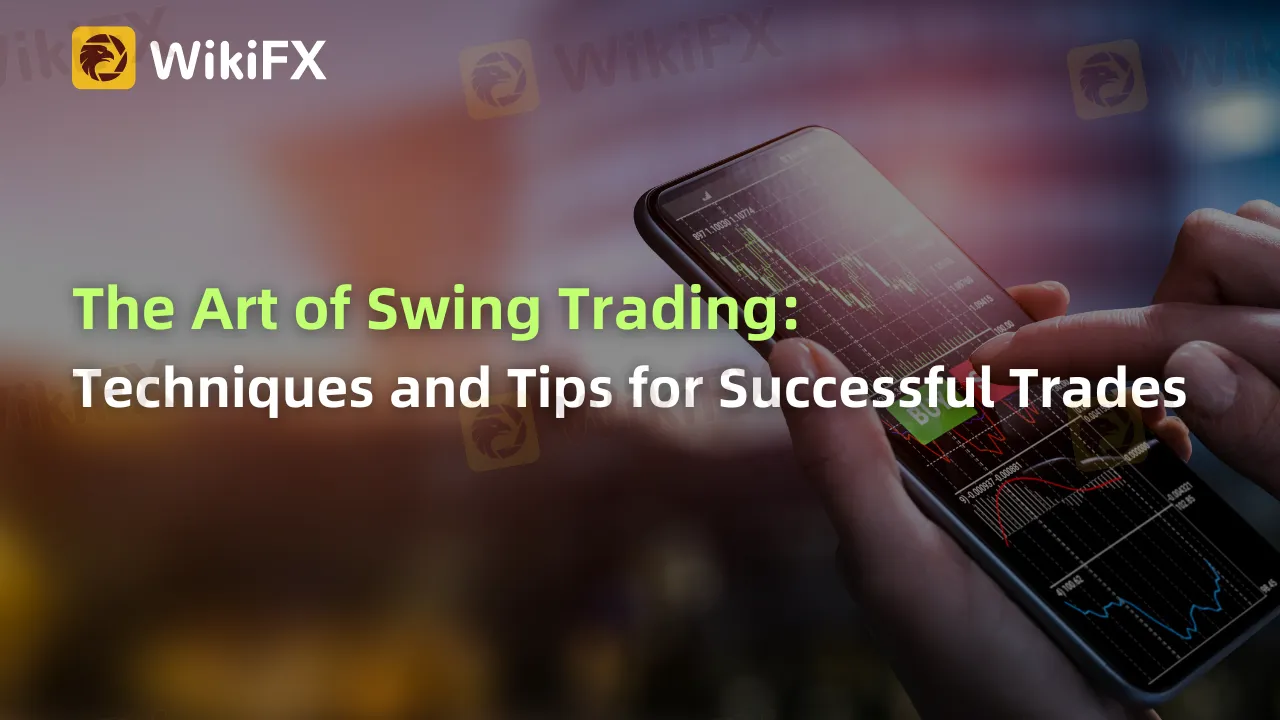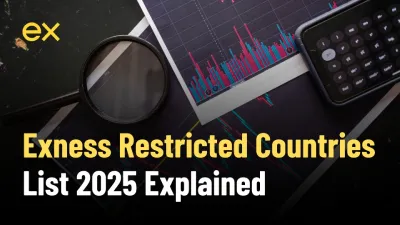简体中文
繁體中文
English
Pусский
日本語
ภาษาไทย
Tiếng Việt
Bahasa Indonesia
Español
हिन्दी
Filippiiniläinen
Français
Deutsch
Português
Türkçe
한국어
العربية
The Art of Swing Trading: Techniques and Tips for Successful Trades
Abstract:Swing trading captures gains from price swings over several days or weeks, filling the gap between day and trend trading. Success requires identifying opportunities, managing risk, timely entry and exit, understanding market conditions, avoiding common mistakes, and keeping updated on market trends. Even in volatile markets, properly executed swing trading can be profitable.

Swing trading, a popular and potentially profitable form of financial market engagement, blends the quick-fire nature of day trading with the longer-term strategic outlook of trend trading. This dynamic style of trading captures the rhythm of the markets, and when executed correctly, it can yield promising returns. However, understanding its intricacies is essential to avoid common pitfalls and maximize profitability.
Swing Trading: A Unique Style
Unlike day trading, which focuses on short-term market movements within a single day, swing traders aim to capture gains from price swings that occur over several days or weeks. This approach contrasts with trend trading, where traders ride the market trend—be it bullish or bearish—for months or even years. Swing trading, therefore, fills the gap between these two extremes, utilizing both technical analysis and fundamental research to identify profitable trades.
Identifying Swing Trading Opportunities
The key to successful swing trading lies in identifying potential opportunities. This requires understanding market trends, price patterns, and key financial indicators. Trading volume, price momentum, support and resistance levels, and moving averages are some of the critical factors swing traders consider. Additionally, fundamental analysis—examining a companys earnings reports, economic indicators, and market news—provides deeper insights into potential price movements.
Risk Management in Swing Trading
Risk management is paramount in swing trading. Traders often use stop-loss orders to limit potential losses if the market moves against their positions. Position sizing—investing only a fraction of the portfolio in a single trade—also helps to spread risk. Diversification, both within and across asset classes, is another crucial strategy that swings traders use to mitigate risk.

Entry and Exit Strategies
Swing traders utilize a variety of entry and exit strategies, often based on technical indicators. For entry, traders may use breakout strategies, buying when prices move above a certain level, signaling a potential upward trend. For exits, traders could use trailing stop orders that move with the price, securing profits while limiting downside risk.
Market Conditions, Timing, and Swing Trading
Market conditions and timing significantly influence swing trading decisions. In a volatile market, price swings can be larger and more frequent, potentially leading to higher profits but also increased risk. Swing traders often rely on market timing strategies, using technical indicators to predict optimal entry and exit points.
Essential Tools and Resources for Swing Traders
Successful swing trading requires a solid toolkit. Real-time charting software, market news feeds, and trading platforms that offer swift execution of trades are essential. Resources like financial news outlets, trading forums, and educational platforms provide valuable insights and learning opportunities.
Avoiding Common Swing Trading Mistakes
Common mistakes that swing traders should avoid include overtrading, neglecting stop-loss orders, and failing to maintain a trading journal. Overtrading can lead to increased transaction costs and risk while neglecting stop-loss orders exposes traders to potentially significant losses. A trading journal helps traders track their performance, identify recurring mistakes, and refine their strategies.
Managing Trades and Making Adjustments
Managing trades and making necessary adjustments is a vital part of swing trading. This involves regularly reviewing open positions, adjusting stop-loss orders as the market moves, and remaining vigilant to changing market conditions that could impact trades.
Developing a Successful Swing Trading Strategy
Developing a successful swing trading strategy involves understanding your risk tolerance, setting clear trading goals, and backtesting your strategy using historical data. It also requires discipline to follow your trading plan and avoid impulsive decisions.

Staying Updated on Market Trends
Staying updated on market trends is crucial for swing traders. Following financial news, analyzing market indicators, and participating in trading forums can help traders stay informed and adapt to changing market conditions.
Profitability in Volatile or Bearish Markets
Even in volatile or bearish markets, swing trading can be profitable. These conditions often increase market uncertainty, but they also provide more significant price swings, which can lead to higher profits. Short selling—borrowing shares to sell them with the expectation of buying them back at a lower price—can be a profitable strategy during bearish trends.
Psychological Challenges in Swing Trading
Swing trading comes with psychological challenges, including managing fear and greed, dealing with losses, and maintaining discipline. To overcome these challenges, traders need to stick to their trading plans, keep emotions in check, and adopt a growth mindset that embraces learning from mistakes.
Indicators and Chart Patterns in Swing Trading
Swing traders rely heavily on technical indicators and chart patterns for trade setups. Commonly used indicators include moving averages, the Relative Strength Index (RSI), and the Moving Average Convergence Divergence (MACD). Popular chart patterns include support and resistance levels, trendlines, and price patterns like head and shoulders, double tops and bottoms, and candlestick patterns.
Balancing Multiple Positions and Portfolio Diversification
Balancing multiple positions and diversifying portfolios are vital strategies for mitigating risk and enhancing potential returns in swing trading. This involves investing in different asset classes and sectors, and not putting too much capital into a single trade.
Educational Resources for Swing Trading
For individuals interested in learning swing trading, resources like Investopedia, Babypips, and various online trading courses offer valuable insights. Books like “A Beginner's Guide to the Stock Market” by Matthew R. Kratter and “Swing Trading for Dummies” by Omar Bassal are excellent starting points.
In conclusion, swing trading is a unique and potentially profitable trading style that requires a combination of technical analysis, fundamental research, risk management, and emotional discipline. By understanding its intricacies and adopting the right strategies, traders can navigate the ebb and flow of the markets and seize profitable trading opportunities.
Download and install the WikiFX App on your smartphone to stay updated on the latest news.
Download the App here: https://social1.onelink.me/QgET/px2b7i8n

Disclaimer:
The views in this article only represent the author's personal views, and do not constitute investment advice on this platform. This platform does not guarantee the accuracy, completeness and timeliness of the information in the article, and will not be liable for any loss caused by the use of or reliance on the information in the article.
Read more

Axi Plaza Redefines Cam Ranh’s Beachfront Business Scene
Axi Plaza launches on Cam Ranh’s coast, merging resort, retail, and MICE spaces in one destination, shaping Vietnam’s tourism future.

Is Inzo Broker Safe or a Scam? An Evidence-Based Analysis for Traders
When traders check out a new broker, the main question is always about safety and whether it's real. Is Inzo a trustworthy partner for your trading capital, or is it a scam you should stay away from? The broker looks modern and professional, offering popular platforms and many different account types. However, this polished look is clouded by many serious complaints from users who report big problems with their money and trading conditions. A simple "yes" or "no" answer isn't enough. To reach a good conclusion, we need a detailed investigation based on facts. This analysis will give you a clear and fair breakdown of the facts. We will cut through the mixed information to give you a complete picture of Inzo.

Exness Restricted Countries List 2025 Explained
Exness confirms its restricted countries list for 2025. Learn where Exness is legal, supported regions, and compliance rules for global traders.

Is Uniglobe Markets Legit? A 2025 Simple Guide to Its Safety, Services, and User Warnings
When traders ask, "Is uniglobe markets legit?" They want a clear answer about whether their capital will be safe. This simple guide for 2025 will give you that answer by examining the broker from every important angle. The most important thing we found is that Uniglobe Markets works without proper financial rules and oversight, causing serious risks. This review will carefully examine its legal status, look at confusing company information, explain its trading conditions, and share real user problems. When checking any broker, it's smart to use websites with detailed verification. Traders can find complete profiles and current warnings for thousands of brokers on WikiFX to help with their research. This article will show you the facts, so you can decide smartly based on evidence, not advertising promises.
WikiFX Broker
Latest News
BASF CEO: EU CO₂ Trading Is A "Destruction Mechanism" For European Industry
WikiEXPO Dubai 2025 “Welcome Party” Kicks Off Tonight!
He Trusted a WhatsApp Group and Lost RM659,000
Is Forex Zone Trading Regulated and Licensed?
PINAKINE Broker India Review 2025: A Complete Guide to Safety and Services
Exness Restricted Countries List 2025 Explained
Is Uniglobe Markets Legit? A 2025 Simple Guide to Its Safety, Services, and User Warnings
Is Inzo Broker Safe or a Scam? An Evidence-Based Analysis for Traders
Capital.com Review 2025: Is It a Scam? Official License Verification and Real User Ratings
BACXN Exchange Exposed: AI-Investment Scam Drains RM1.2 Million
Currency Calculator




